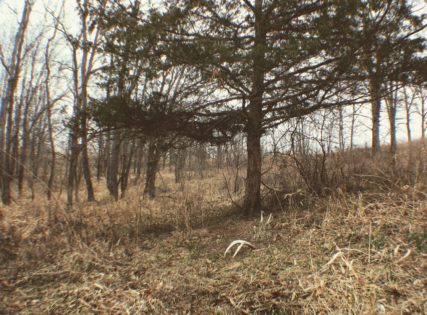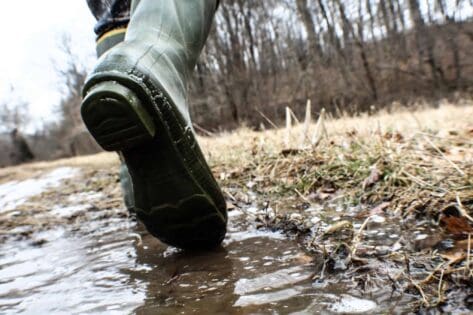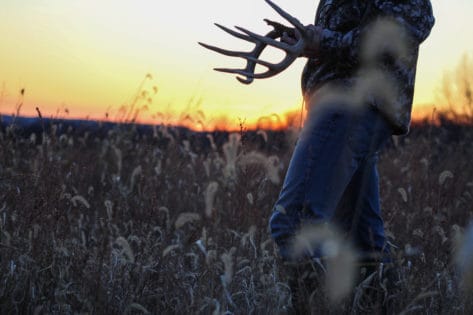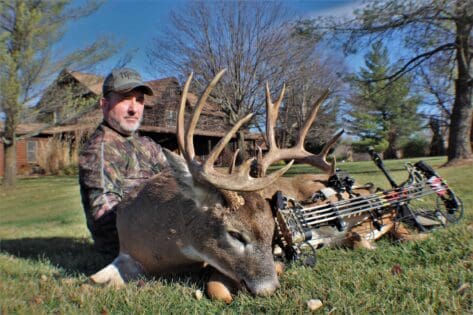Finding the Other Side To Shed Antlers
 Finding a match set of sheds can be a difficult task to say the least. Bucks can be one sided for multiple days allowing them to drop their antlers literally miles apart. However, the majority of bucks if left undisturbed, will stay within a distinguished late season pattern as long as cover and a quality food source persist throughout winter. That being said, most deer will not shed their antlers side by side, rather they will drop their antlers some distance from each other. Once you have found one side of a particular buck, the next challenge finding the other side. I’ve compiled a short list of tactics I use to try and find match sets of antlers here in the Midwest.
Finding a match set of sheds can be a difficult task to say the least. Bucks can be one sided for multiple days allowing them to drop their antlers literally miles apart. However, the majority of bucks if left undisturbed, will stay within a distinguished late season pattern as long as cover and a quality food source persist throughout winter. That being said, most deer will not shed their antlers side by side, rather they will drop their antlers some distance from each other. Once you have found one side of a particular buck, the next challenge finding the other side. I’ve compiled a short list of tactics I use to try and find match sets of antlers here in the Midwest.
Where to Look for the Other Shed Antler
After you find the first shed antler, take a step back and evaluate what the buck was doing at that time and why he would be there in the first place. Basically, you can narrow it down to a few different locations in late winter; bedding, food source, or traveling from bed to food.
Shed in a Bed? Search the Surrounding Cover…
If I find the first shed in bedding cover, or in an actual bed, I’ll start by taking note in which way the bed was facing, this can lend you an important clue for why and when the buck was there. For instance, if the bed is laying from West to East on a southern exposure, it probably means that that buck was bedding there during the daylight soaking up the extra sunlight. Be sure to scour the surrounding area as bucks will tend to get up and browse throughout the day on woody vegetation nearby and will often knock the other side off while browsing. If you find the first shed in a “nighttime” bed, say out in the middle of a wide open field drainage ditch, then try to determine the closest, most secluded bedding cover. If I’m unsuccessful at finding the other side nearby in surrounding cover, I’ll focus the next part of search to the closest food source. In the Midwest this typically means some type of agricultural field or food plot.
Determine the Closest Quality Food Source
Food source is obviously key for the buck being there in the first place. If for instance you found the first shed antler in a bedding area, locate the primary trails leading to the most prominent food source nearby. Make sure to cover each trail, typically there are two to three good trails leading directly to the food source. In years of heavy snow and extreme cold, deer will make a direct line from their bedding to food. When we have a milder winter, whitetails are less keen to take the same route day after day and can make for locating the other side more challenging.
Once you cover the trails that lead to the food source, depending on the size and cover around the food source, this will probably be your best bet at finding the other side of the buck. Focus on the edges in agriculture fields. Especially the south side of fence lines or any type of structure a buck might be able to take cover from strong northerly or westerly winds. Also check drainages and waterways in larger food sources where bucks tend to bed down during their overnight feeding hours.
Broaden the Search Area- Search in “Classic” Shedding Spots
If you are unable to find the match in the primary food source in the area, broaden your search. It’s not uncommon to find the other side ¼ mile away or further from each other. If you’re trying to find the other side to a very big buck and have ample time to do so, take a topo map of your hunting area and use the process of elimination. Eliminate all areas in which you believe least likely for the buck to have dropped the other side. Highlight areas in which you believe the best opportunity to find the other side and focus your search in those areas.
A few years back, my oldest brother and I were out shed hunting in Central-Indiana. We often bring walkie talkies and cover wide traverses of land at a time. I was surprised to hear my brothers excited voice over the radio just an hour or so into our search about finding a monstrous 4-point side in a swampy area we frequently find sheds in. The search was on for the other side. 
In the end, you may never find the match set but if you keep a positive attitude and continue to diligently search for the other side your chances for matching up the other side can only increase. When you do find the other side, the effort will be well worth it.
-Zach Jumps
Zach@HeartlandLodge.com
Last Updated: February 21st, 2024





Thanks for the read! I’m am from Wisconsin and shed hunt Dunn and rusk country. So far this year I have collected 12 sheds and my cousin who I go with has collected 33. It’s been a great year and eager to find more. The other day we went and we collected 10 shed but only matched one after our 4 hour search. We do have quiet a bit of snow yet which makes it hard so hoping to get back out after the melt. Thanks again, Blake.
I have been shed hunting in Indiana for about 3 years and yesterday I found a big shed from a 12 pointer we have in trail cams and I only found the one side and every time I find a shed I only find one side and I want to find the other side so I might go back out and see if I can find that other side thanks.
I got a pup when he was 7 weeks old and trained him.He found 16 on his own.And fun to watch.Together we found 78 here in Pa.6 matched sets.The biggest were 600 yards apart.He turned a year old on March 27th.Cant wait to see how he does this year.Best advice look at your feet then out.Most we found were 15 feet away or less.
Wow that is a great year. Congrats and good luck in the future! Thanks for reading!
I found my first shed today and it was a pair side by side! I’m still fairly new to hunting this is my 5th season. My husband and hunting partner taught me so many things about hunting these past few years and has found a few single sheds over the 16 years he hunted our property. I lost my husband at the beginning of the year and it has been a very difficult time to continue putting out trail cameras and feeders but I have committed to continuing his hard work and love for the outdoors to keep me going. I was out switching camera cards this morning when I happened upon the sheds right on the side of the path to the feeder. Now I have my very own set, I think someone special left them for me.
I have found one side of a shed long a lunging road and I do want to know how to find the other side of the shed I do live in Ohio